A non-enthusiast coworker recently told me “they don’t build wooden roller coasters anymore.” This statement is, of course, completely false. Just ask the Gravity Group who are on track to open seven new rides this year. But I have seen a similar sentiment that wood coasters are going extinct argued in various forums and Facebook groups. So what would make anyone think wooden roller coasters are no longer being built?
Locally, most non-enthusiasts are only aware of what’s going on within a three-hour driving radius. For instance, if you live in Ohio it’s not hard to see why you might come to this conclusion. The last new wood coasters in the state opened in 2000 (Villain and Son of Beast), over 15 years ago. Both those rides have since been torn down, leading to the perception that it’s not worth it to build wooden roller coasters anymore.
Nationally, we’ve also seen several high profile rides torn down. In 2015 alone, Gwazi was closed, ThunderRoad just gave its last ride, and Roar will soon be silenced. Last year it was Cyclone and Colossus. Since 2009, ten wooden roller coasters have closed in the United States:
Of these 10 (or eleven if you count Twisted Twins, which actually closed in 2007 but is just now being replaced), five are racing or dueling coasters so technically you could count each of these twice if you wanted to.
All these big, classic wooden coasters closing makes it feel as though we’re losing woodies for good. But if we look at the stats, what’s interesting is that in the last six years, 12 new wooden coasters have opened in the US, an average of two per year (though only 4 are taller than 100 feet).
So in the last six years, our wood coaster net gain here in the US is +1. We’ve opened more than we’ve demolished. How does this compare historically? Since 1970 the US averages adding 2.5 new wooden roller coasters every year. The number of new wood coasters opened per decade:
The 1920s were the Golden Age of Wooden Roller Coasters with nearly 2,000 rides being built. Few of these coasters have survived. The 1940s through the 1960s were a low point for coasters and amusement parks in general, and made our list of Worst Years for New Coasters. The graph of the wood coaster’s popularity looks like a roller coaster itself. We may be at the bottom of the hill right now here in America, but hopefully it’ll rise again soon.
Wood coaster trends in America vs China
Earlier I mentioned Gravity Group is opening seven new wood coasters in 2015. But the USA is only getting one of those. Where are the others going? Five are opening in China where there’s been an explosion of amusement parks thanks to the rapidly expanding middle class. People with more disposable income can afford to spend more on leisure activities like theme park visits. But there was a lack of large theme parks until very recently, and the expansion boom is still continuing. Some absolutely incredible theme parks are being built, and with them some crazy new roller coasters.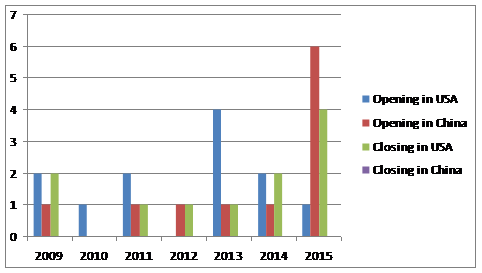
The first modern wooden roller coaster in China opened in 2009. That’s right – 2009! I type this while sitting in America, where wooden coasters have been present for more than a hundred years, so it’s hard to believe that a country as large as China has only had a modern wooden coaster for a couple of years ( I say modern because there could have been earlier coasters but none that are well document or lasted for a long time). It’s also reassuring to know there’s at least one product still made in America and exported to China – wooden coasters! All eleven have been designed by American companies Great Coasters International or The Gravity Group. Where China lacks in quantity of wood coasters, they make up for in quality. No mediocre looking rides to be found here!
A New Age for Wooden Coasters
The wooden roller coaster has undergone an evolution. A couple of years ago we had no looping wooden coasters. By end of 2015 we could have six, with undoubtedly more on the way next year. 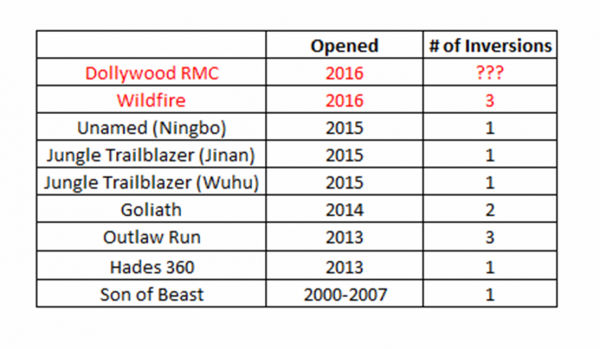
Because of inversions and companies like RMC, the percentage of steel used in the entire ride and structure seems to be increasing – leading some to label these as hybrid as opposed to classifying as wood coasters.
No, the wooden coaster is not dead; they’re just not the kind your parents and grandparents would recognize. Is that a bad thing? Let me know what you think by replying in the comments below or on social media.

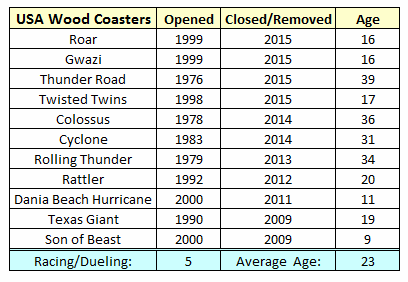
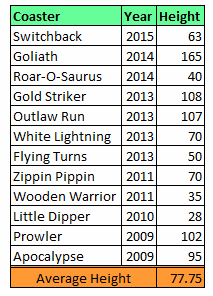
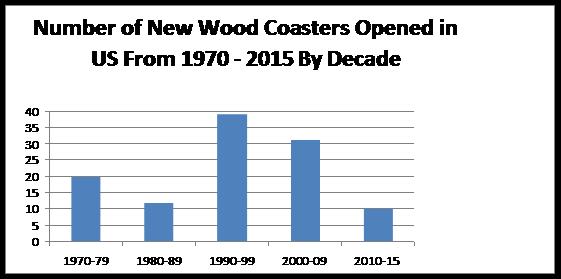
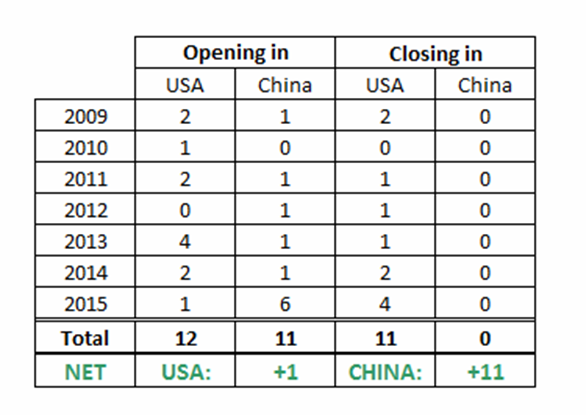
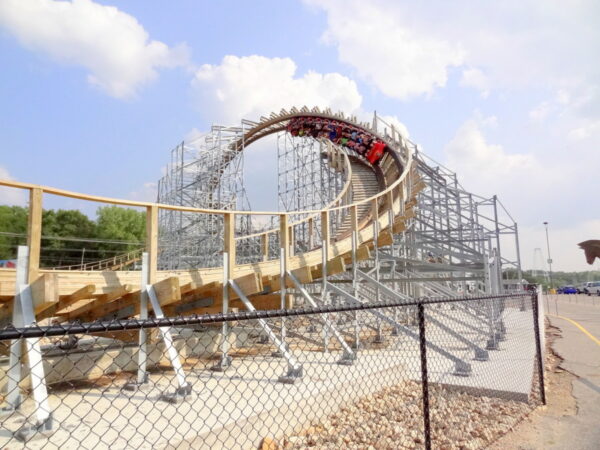
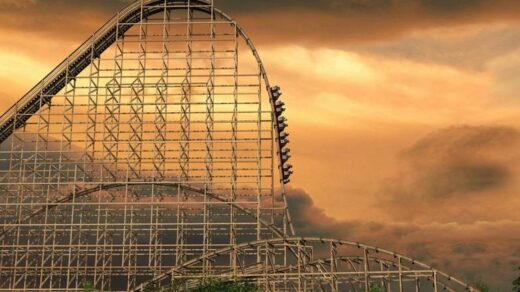
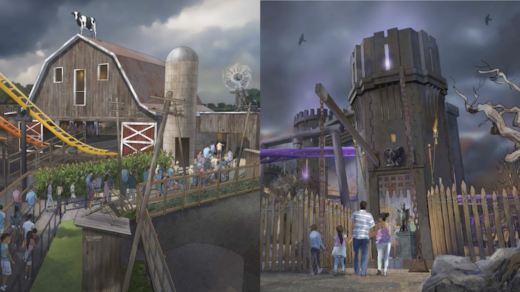
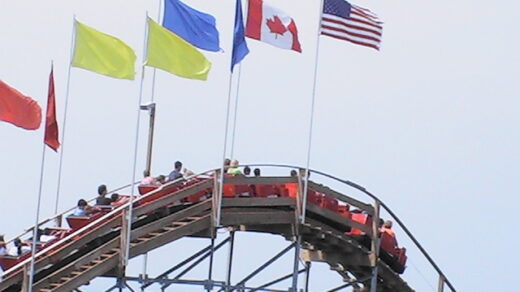



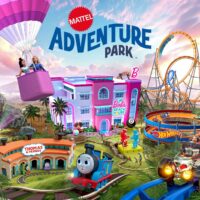





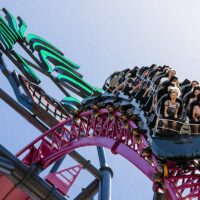
There was one known wooden coaster built in China before the Gravity Group ‘invasion’ so to speak, and by that I mean enough to make it onto RCDB (http://rcdb.com/3997.htm), that’s it.
But I want to see a major park here in the U.S. either invest in a new traditional wooden coaster, OR either attempt to save Big Dipper or the Williams Grove Cyclone.
I believe the general census of coaster lovers are speaking about the late and great designers such as Herbert Schmeck, John Miller, and Harry Traver to name a few. As an Ohioan, I have lost quite a few good wooden coasters. The Comet (Schmeck) at Meyers Lake, Canton, The Big Dipper (Allen) Geauga Lake, Aurora, just to name a few! Thanks for your input.